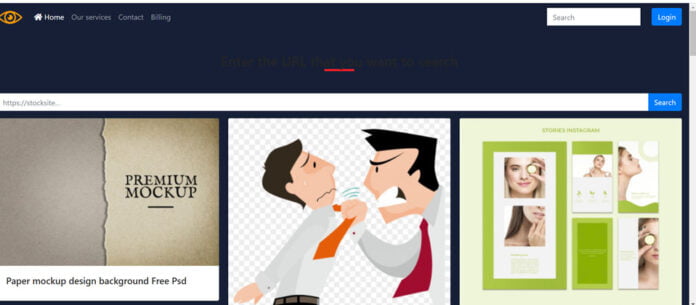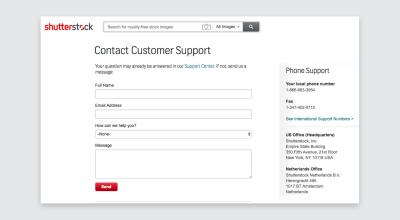Ever come across stunning footage on Shutterstock and wondered how to get it without the pesky watermarks? You’re not alone! Many users want clean, watermark-free clips for their projects but aren’t quite sure how to do it legally and efficiently. In this guide, we’ll walk you through the ins and outs of downloading Shutterstock footage without those distracting marks, ensuring you get the best quality while respecting copyright rules. Whether you’re a content creator, marketer, or just a video enthusiast, this post will help you navigate the process smoothly and confidently.
Understanding Shutterstock Watermarking and Its Purpose
Before diving into how to remove watermarks, it’s important to understand why Shutterstock uses them in the first place. Watermarks are semi-transparent logos or patterns embedded into preview videos to protect the creators’ rights and prevent unauthorized use. When you browse Shutterstock, most of the footage you see has watermarks to discourage theft and misuse. These watermarks serve as a visual cue that the footage is copyrighted and requires purchase or licensing for full, unwatermarked access.
Think of watermarks as a security badge—an indicator that the clip is protected and not free for commercial or personal use without proper authorization. They also give you a chance to evaluate the footage’s quality and relevance before committing to a purchase. When you buy a license, Shutterstock provides you with a high-resolution, watermark-free version that you can legally incorporate into your projects. So, while watermarks might seem like an obstacle, they play a crucial role in protecting content creators and ensuring fair compensation.
3. Legal Considerations for Downloading Shutterstock Videos Without Watermarks
When you’re diving into the world of stock footage, it’s super important to understand the legal landscape. Shutterstock, like many other stock media providers, has clear rules about how their content can be used. Downloading videos without paying or without proper authorization can lead to serious legal issues — and nobody wants that hassle.
First off, the watermarked previews you see on Shutterstock are there for a reason — they’re meant to protect the creators’ rights. These watermarks make it clear that the footage isn’t licensed for free use. So, trying to remove or bypass these watermarks without proper permission is generally considered copyright infringement, which can result in:
- Legal actions or lawsuits
- Financial penalties or fines
- Damaged reputation or loss of credibility
- Potential bans from Shutterstock or other platforms
It’s also worth mentioning that some people might be tempted to use third-party tools or suspicious websites claiming to provide watermark-free videos for free. These sources are often unreliable, and using them can expose your device to malware, or worse, compromise your legal standing.
The best practice? Always respect the licensing terms. When you purchase a license or subscription, you’re paying for the legal right to use that footage as specified in your agreement. If you’re unsure about what’s allowed, reach out to Shutterstock’s customer support or consult their licensing FAQs. Playing by the rules not only keeps you safe legally but also supports the talented creators who produce these videos.
4. Official Methods to Obtain Watermark-Free Shutterstock Footage
If you’ve ever seen a fantastic clip on Shutterstock and wanted to use it without the annoying watermark, there’s good news — there are legitimate ways to get that high-quality, watermark-free footage. Let’s walk through the official methods:
1. Purchase a Single Video or Subscribe
The most straightforward way is to buy the video outright or subscribe to Shutterstock’s service. When you purchase a license or subscribe, Shutterstock grants you legal rights to download high-resolution, watermark-free versions of their videos. Here’s what you need to know:
- Single Purchase: You can buy individual clips, which gives you the rights to use them according to the license purchased.
- Subscription Plans: These are more cost-effective if you need multiple videos regularly. Subscribers can download a set number of videos per month or year, all watermark-free.
2. Use Shutterstock’s Download Options
Once you’ve purchased or subscribed, simply log into your account, find the video you want, and click the download button. You’ll get a high-quality, watermark-free file suitable for your project.
3. Licensing and Usage Rights
Make sure you understand the licensing terms associated with your download. Shutterstock offers different license types, including Standard and Enhanced licenses, each with specific usage rights. These licenses determine where and how you can use the footage — like in commercial projects, online videos, or broadcasts.
4. Consider Extended Licensing
If you plan to use the footage in a way that exceeds the standard license — such as large-scale distribution or merchandising — you might need an extended license. This is available through Shutterstock and ensures you’re fully compliant with legal requirements.
In short, the official and safest way to get watermark-free footage from Shutterstock is to purchase or subscribe through their platform. This guarantees you’re respecting copyright laws, supporting the creators, and getting top-quality, legal footage for your projects. Remember, cutting corners might seem tempting, but it’s not worth risking legal trouble or damaging your reputation.
5. Tips for Purchasing and Licensing Shutterstock Videos Legally
When it comes to using footage from Shutterstock, the most important thing is to ensure you’re doing it legally and ethically. Buying and licensing videos properly not only keeps you safe from legal trouble but also supports the creators who produce this high-quality content. Here are some handy tips to help you navigate the licensing process smoothly.
Understand the Licensing Options
Shutterstock offers different licensing plans, mainly Standard and Extended licenses. The Standard license is suitable for most online projects like websites, social media, and presentations. If you plan to use footage for merchandise, TV broadcasts, or large-scale commercial campaigns, an Extended license might be necessary. Take the time to review what each license covers so you choose the right one for your project.
Read the License Agreement Carefully
Before purchasing, always read the license agreement thoroughly. It details what you can and cannot do with the footage, any restrictions, and attribution requirements. Understanding these terms upfront helps prevent accidental misuse or legal issues down the line.
Use the Shutterstock Platform Properly
- Download only from official sources: Always acquire videos directly from Shutterstock’s website or authorized partners.
- Keep proof of purchase: Save receipts, licenses, and download confirmations in case you need to prove your right to use the footage later.
- Avoid unauthorized distribution: Don’t share or distribute the footage outside of your approved project scope.
Budget for Your Licensing Needs
High-quality footage can be an investment, especially if you need multiple clips or extended licenses. Plan your budget accordingly and consider subscribing to a plan if you frequently use stock videos. This approach can save money in the long run and streamline your licensing process.
Respect Copyright and Usage Rights
Even after purchasing, always adhere to the licensing restrictions. For example, some clips may not be used for political campaigns or sensitive topics unless explicitly allowed. Respecting these boundaries keeps your work compliant and ethical.
Consult Legal Experts if Needed
If you’re unsure about licensing terms or how to legally use a particular clip, don’t hesitate to seek legal advice. Many professionals specialize in intellectual property law and can help clarify your rights and obligations.
By following these tips, you can confidently purchase and license Shutterstock videos, ensuring your projects are both professional and compliant with copyright law. Respecting licensing terms not only keeps you out of trouble but also supports the talented creators behind these videos.
6. Common Methods and Tools People Use to Remove Watermarks (Note Risks and Legality)
It’s tempting to want a quick way to get watermark-free footage, especially when you’re eager to start a project. However, it’s crucial to understand that removing watermarks without permission is generally illegal and unethical. That said, many people do explore various methods and tools to remove watermarks—often risking legal consequences. Let’s take a look at some of these common approaches, along with their risks and the importance of respecting copyright laws.
How People Usually Remove Watermarks
Here are some of the most common techniques and tools people mention online:
- Photo editing software: Tools like Adobe Photoshop or GIMP can sometimes be used to manually clone or cover up watermarks with surrounding pixels.
- Watermark removal tools: Specialized software such as HitPaw Watermark Remover, Remove Logo Now, or Inpaint claims to erase watermarks automatically.
- Video editing programs: Programs like Adobe Premiere Pro or DaVinci Resolve can be used to crop or blur watermarked sections of videos.
- Online services: Websites offering quick watermark removal services, often with a simple upload-and-process interface.
Limitations and Risks of Removing Watermarks
While these methods might seem straightforward, they come with significant risks and limitations:
- Legal issues: Removing watermarks without permission infringes on copyright law and can lead to legal action, fines, or other penalties.
- Quality degradation: Watermark removal often leaves artifacts, blurs, or distortions, reducing the video’s visual quality.
- Ethical concerns: Using watermarked footage without authorization undermines the rights of content creators and can harm your reputation.
- Potential malware risks: Downloading tools or services from untrusted sources might expose your device to viruses or malware.
The Right Approach
Instead of risking legal trouble or poor-quality results, the best practice is to obtain licensed, watermark-free footage through legitimate means. If you find a clip you love on Shutterstock, purchasing the appropriate license guarantees you legal access to the content without watermarks. Many providers also offer subscription plans or bundles, making it more affordable and straightforward to access high-quality, watermark-free videos.
Remember, respecting copyright and licensing terms helps support the hardworking creators who produce this valuable content. While it might be tempting to remove watermarks through various tools, the legal and ethical implications far outweigh the short-term benefits. Always choose legitimate avenues to access and use stock footage responsibly.
7. Alternative Stock Footage Platforms Offering Free or Watermark-Free Content
If you’re looking to diversify your source of stock footage or just want to explore options beyond Shutterstock, there are several fantastic platforms out there that offer free or watermark-free video content. Whether you’re on a tight budget or want to test different styles, these sites can be real game-changers.
Free Stock Footage Websites
- Pexels: Known for high-quality, royalty-free videos that you can use for personal and commercial projects. No watermarks, and the collection is constantly growing.
- Pixabay: Offers a wide range of free videos, images, and music. Videos are released under Creative Commons Zero (CC0), meaning you can modify and use them without attribution.
- Videvo: Provides a mix of free and premium footage. Free clips often come with licensing restrictions, so always check the license before downloading.
- Coverr: Focused on providing beautiful, free videos for website backgrounds and other creative uses. No attribution needed.
- Mixkit: Offers a curated collection of free high-quality videos, all available for commercial use without attribution.
Watermark-Free Content on Paid Platforms
If you’re willing to invest a little, many paid platforms also offer free trials or free clips with no watermarks. This can be a great way to access premium quality footage without committing long-term.
Some popular paid options include:
- Adobe Stock
- Envato Elements
- Storyblocks
- Artgrid
Remember, always review the licensing terms on each platform to ensure you’re using the footage legally in your projects. Exploring these alternatives can not only save you money but also give your projects a fresh, unique visual touch!
8. Best Practices for Using Shutterstock Footage in Your Projects
Using Shutterstock footage can significantly boost the production value of your videos, but it’s important to follow some best practices to ensure seamless integration and legal compliance.
1. Always Use Licensed Footage Properly
Ensure that your download and use of Shutterstock footage adhere to the licensing agreement you’ve purchased. For example, a standard license typically allows for most uses, but you should avoid reselling the footage as a standalone product or using it in a way that could infringe on copyright.
2. Download the Highest Quality Version
Opt for the highest resolution available—especially if your project will be displayed on large screens or requires cropping. This prevents pixelation and maintains a professional look.
3. Edit and Customize
Don’t just insert footage as-is. Make it your own by editing, cropping, color grading, or combining clips. This helps your project stand out and reduces the risk of copyright issues if the footage is widely used.
4. Pay Attention to Composition and Consistency
Match the footage’s style, lighting, and color palette with your project’s overall aesthetic. Consistency in visual style makes your video look polished and cohesive.
5. Keep Track of Licensing and Usage Rights
- Save your purchase receipts and license agreements.
- Document where and how you used each clip.
- This can be helpful if questions about licensing arise later.
6. Respect Model and Property Releases
Some footage may include recognizable people or private properties. Make sure the footage you use has the appropriate releases if needed, especially for commercial projects.
7. Use Watermark-Free Files Responsibly
When you download the watermark-free version, ensure it’s stored securely and used only in the projects you’ve licensed it for. Never distribute or share unlicensed footage.
By following these best practices, you’ll maximize the impact of Shutterstock footage in your projects while staying on the right side of legal and ethical standards. Happy editing!
Conclusion and Final Tips for Accessing Shutterstock Footage Legally
Accessing Shutterstock footage legally ensures you respect copyright laws and avoid potential legal issues, while also supporting content creators. To make the most of your experience, always opt for legitimate methods to obtain footage, such as purchasing licenses or subscribing to Shutterstock’s plans. Remember, downloading or using footage without proper authorization can lead to serious consequences, including fines or legal action.
Here are some final tips to help you access Shutterstock footage responsibly:
- Subscribe or Purchase Licenses: Always use official Shutterstock accounts to buy footage or subscribe to their plans, which provide legal access to a wide range of high-quality clips.
- Use Watermarked Previews: Take advantage of the free watermarked previews to evaluate footage before making a purchase, ensuring it fits your project needs.
- Download Legally: Never attempt to bypass watermark protections or use third-party tools to remove watermarks; this is illegal and unethical.
- Understand Licensing Terms: Familiarize yourself with Shutterstock’s licensing agreements to ensure your usage complies with their policies, especially for commercial projects.
- Keep Records: Save receipts or license agreements for future reference, especially if you need proof of licensing during project submission or for legal purposes.
In summary, the key to accessing Shutterstock footage legally is to rely on authorized channels, respect licensing agreements, and avoid shortcuts that could compromise your legal standing or the integrity of your work. By following these guidelines, you can confidently incorporate stunning footage into your projects while supporting the creative community.



